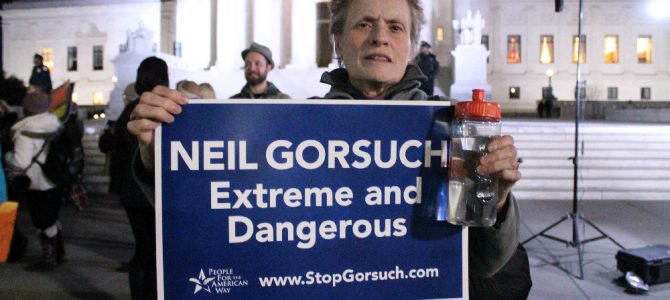
Judges have been disappointing the pro-life movement since 1973, when seven justices reached into a magical hat and pulled out a Cconstitutional right to abortion based on a right to privacy, both of which are not mentioned in the Constitution. Writing between the lines, judges threw out abortion-related laws in all 50 states, putting themselves at the head of a virtual Abortion Legislative Task Force, with the final say on policy, despite the fact the judges are not supposed to write the laws, but enforce them.
All of this makes the decision in June Medical v. Russo just one more example of how the deeply flawed legal framework of abortion is made possible by the oversized power of a few judges. Before that, the law showed respect for the pre-born, reaching back into the 1200s, holding abortionists responsible for preying on women. Despite the abortion industry’s talking points, women were not prosecuted but were treated as second victims of predatory businesses.
As Justice Clarence Thomas notes in a stinging dissent in the case, “Roe is grievously wrong for many reasons, but the most fundamental is that its core holding — that the Constitution protects a woman’s right to abort her unborn child — finds no support in the text of the Fourteenth Amendment” where such abortion rights were found to be hiding. Thomas continues:
In 1868 when the Fourteenth Amendment was ratified, a majority of the States and numerous Territories had laws on the books that limited (and in many cases nearly prohibited) abortion. It would no doubt shock the public at that time to learn that one of the new constitutional Amendments contained hidden within the interstices of its text a right to abortion. The fact that it took this Court over a century to find that right all but proves that it was more than hidden—it simply was not (and is not) there.
Before Roe v. Wade and its companion case Doe v. Bolton, the 50 states developed their own policies in the messy context of democracy, which allows for citizens to conclude what kind of country we want to be. Pro-abortion Justice Ruth Bader Ginsburg, in her own critiques of Roe, discusses the loss of that legislative process and about how women were removed from it.
“Roe isn’t really about the woman’s choice, is it?” Ginsburg said at a University of Chicago Law School event in 2013. “It’s about the doctor’s freedom to practice…it wasn’t woman-centered, it was physician-centered.” That point is front and center in the Louisiana ruling in which abortionists fought health and safety standards designed to protect their customers.
In his dissent, Justice Samuel Alito writes:
This case features a blatant conflict of interest between an abortion provider and its patients. Like any other regulated entity, an abortion provider has a financial interest in avoiding burdensome regulations … Women seeking abortions, on the other hand, have an interest in the preservation of regulations that protect their health. The conflict inherent in such a situation is glaring.
The abortionist-centered approach grants those committing abortion unique legal protections for their deadly business. Chief Justice John Roberts, in siding with the four abortion-supporting justices, cast the vote that continued that disappointing practice, citing legal precedent.
Thomas found that absurd, writing, “Those decisions created the right to abortion out of whole cloth, without a shred of support from the Constitution’s text. Our abortion precedents are grievously wrong and should be overruled.”
Indeed, infants in the womb receive no real attention in the case. Yet considering how many laws are passed to govern human behavior impacting everything from the environment to commerce, ignoring the pre-born is a glaring legal oversight.
Respected Yale Legal Scholar John Hart Ely, who personally supported abortion, penned a critique of Roe v. Wade that still resonates:
It has never been held or even asserted that the state interest needed to justify forcing a person to refrain from an activity, whether or not that activity is constitutionally protected, must implicate either the life or the constitutional rights of another person. Dogs are not ‘persons in the whole sense’ nor have they constitutional rights, but that does not mean the state cannot prohibit killing them.
Yet here we are today, in which puppies have legal protections that pre-born babies do not.
The legal vulnerability of the pre-born is possible because efforts to restore direct protections have so far failed. Starting in the 1970s, multiple attempts were made to pass a Human Life Amendment to the Constitution to make it clear that human beings in the womb count as human beings under the law, so today the pro-life movement pursues a strategy of seeking legal remedies from judges. That’s clearly a faulty system.
For those new to pro-life advocacy who may be disappointed, brokenhearted, shocked, and surprised by judicial overreach, welcome to the pro-life movement. We’ve been dealing with activist, abortion-supporting judges since 1973, but this is not the end.
As with any civil rights struggle, there will be setbacks, but the moral necessity of defending human life from conception to natural death means confronting the faulty legal foundation of Roe, one case at a time, one judicial appointment at a time, which is why elections are so crucial. Never forget: It matters who appoints the judges.









